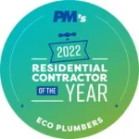Discovering low water pressure in a tub, shower, or kitchen sink is frustrating. You turn on the tap and realize it’s going to take you twice as long to wash your hair or rinse the dirty dishes. Sometimes, it’s a community water flow problem, but there are also home-centric reasons why your pipes aren’t producing the flow you expect. You may be experiencing low flow if there is buildup or debris in the lines, if there is a leak, or if the pressure regulator has gone bad.
Troubleshooting Your Low Water Pressure Problem
Whether you have always had undesirable water pressure in your home or you’ve just started to notice a change, there are some easy ways to troubleshoot the problem. Some fixes are as simple as cleaning or changing the aerator on a fixture, while other problems may require professional help. If you only notice a low flow problem in some of your fixtures, it’s likely that the problem is isolated around that area. Here are some troubleshooting steps you can take at home:
Purchase a water pressure gauge –For as little as $20, you can get a testing gauge from your local hardware store to attach to a hose. When you test the hose faucet pressure, anything below 60 psi might indicate that you’re getting low flow from your well or municipality. You’ll need to hire a professional plumber to help you remedy general low flow problems.
Make a note of all the fixtures in your home delivering subpar flow – The first remedy is to remove the aerator (little screen) from the fixture. If that solves the pressure problem, you can clean or replace the aerator for a simple fix.
Look over the water shutoff valves in the home – If the valve on the pressure regulator is partially shut, you could experience low flow throughout the home. Open the valves fully and check the water pressure throughout the home. If the regulator looks like it’s damaged or has stopped working, you may want to contact a plumber for a replacement part.
Check the water heater – Your water heater has a shut-off valve that may restrict the flow of hot water in the home. If you only notice low flow problems when you turn on the hot water, open up the valve to fix the problem. You may also want to perform routine maintenance (draining the tank and other tasks) to ensure your hot water is flowing optimally.
Mineral buildup – Cleaning showerheads regularly can improve water flow if the blockage was caused by buildup. If you have to clean your fixtures regularly because of buildup, it may be time to contact a professional. Buildup down the line can cause problems in individual fixtures around the home.Another common issue that may require the help of a professional plumber is a leak somewhere in the water line. Some low flow problems are easier to fix than others. If you get stuck, reaching out to a professional plumbing company may be the best way to get your questions answered and your water pressure restored.
For help in resolving your home’s low water pressure issues, contact The Eco Plumbers today.












